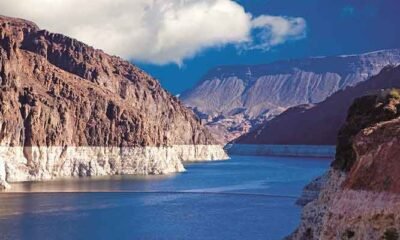arizona
Boosting Arizona’s Future: Urgent Need for More Weatherization Contractors Amid Rising Demand

The Arizona Department of Housing (ADOH) is actively managing the Weatherization Assistance Program (WAP), which is part of a nationwide initiative that has already assisted over seven million income-eligible families. This program aims to reduce energy bills by enhancing energy efficiency. By supporting low-income households, ADOH helps alleviate expenses related to heating, cooling, and water heating, while also prioritizing residents’ health and safety. Funding for the WAP is secured through the federal Department of Energy.
As energy demands surge with rising temperatures, the role of the weatherization program manager becomes increasingly vital. They ensure that essential energy efficiency assistance reaches low-income families across Arizona. Since its inception in 1976, the program has provided crucial support, enabling households to save on energy costs and improve their living conditions through necessary upgrades.
To maximize the federal and private funding available and to expand the program’s reach, there is a pressing need for more qualified weatherization contractors. The installation process for energy efficiencies under the ADOH WAP must adhere to federally mandated specifications, pass inspections, and achieve measurable savings. To facilitate this, training funds are available for contractors seeking certification, and Arizona boasts a dedicated facility accredited by the Interstate Renewable Energy Council for contractor training.
Expanding the contractor base, combined with utilizing federal resources for training, can lead to reduced energy costs for a greater number of families. This initiative ultimately aims to foster safer and more sustainable homes throughout Arizona.
Evaluations of the Weatherization Assistance Program reveal notable health benefits for participating households. Research indicates a significant decline in emergency room visits and other health-related costs. The program particularly aids asthma sufferers by mitigating triggers such as mold and dust—issues that disproportionately affect low-income families.
Statistics from the CDC highlight that 8% of U.S. adults and 9.3% of children suffer from asthma, with elevated emergency visit rates in urban and minority communities. National studies show that weatherization leads to an 11.5% reduction in emergency room visits and a 3.1% drop in hospitalizations for asthma patients. These findings reinforce the broader health advantages of the WAP, especially for vulnerable populations.
The AZ WAP is actively encouraging individuals and contractors to pursue weatherization training programs. This push aims to ensure that increased funding assists more eligible families in upgrading their homes for improved energy efficiency. Community education about clean energy jobs is also a focus, fostering employment opportunities while stimulating local economies.
However, the initiative faces challenges, namely the need for skilled labor. Many job seekers are unaware of weatherization career opportunities or struggle to access local training. Expanding outreach and resources can empower more individuals to pursue careers in essential services like insulation, HVAC, plumbing, and more.
Financial relief is on the horizon with federal investments in the AZ WAP, which promises significant savings for qualified families. National evaluations suggest that households can achieve average savings of $372 or more annually through program improvements. These enhancements can range from adding insulation to controlling air leaks and installing water-efficient fixtures—all based on thorough energy assessments conducted by certified professionals.
These energy efficiency efforts aim to improve household finances while contributing to a sustainable future for all Arizonans. To meet the increasing demand, more weatherization professionals are necessary. This growth in clean energy funding and job opportunities signifies a positive shift for Arizona.
For additional information, access the Arizona Department of Housing weatherization website for links to WAP providers and partners across the state.


















